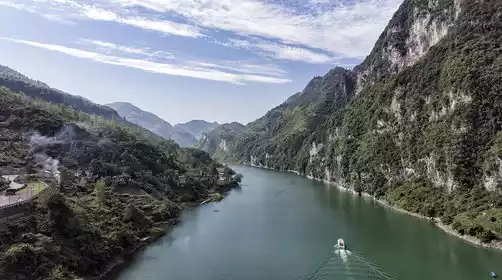Day 1: Anywhere in the country or Chongqing → → → → → Chongqing ★ Meeting Day
All day
Today is a full-day gathering day. Tourists from all over the country can choose their own transportation and arrive at the designated hotel in Chongqing to gather and report. After the room is arranged, you can choose to have free time.
Chongqing, the internet-famous "8D Magic City," boasts countless photo-ops. Early arrivals can head to Graffiti Street for stunning photos and savor the traditional flavors of Jiaotong Teahouse. Alternatively, explore the area surrounding the iconic Jiefangbei Monument, take a bird's-eye view of the city, ride the Yangtze River Cableway for a bird's-eye view of the city, ascend the WFC Huixian Tower for a close-up night view, or take in the nightscape from a boat on a Two Rivers Night Cruise. Chongqing, a foodie paradise, is bustling with the aroma of spicy food, from Sichuan cuisine, Jianghu dishes, traditional hot pot, Chongqing noodles, hot and sour noodles, wontons, tofu rice, and skewers... Too spicy? Too spicy?
Have a bottle of Shancheng beer, a bottle of Weiyi, or a bowl of icy ice jelly or mung bean soup to relieve the tension instantly.


Day 2 City → Pengshui Jiuli City → Gongtan Ancient Town
·morning
After breakfast, we will depart from the hotel and arrive in Pengshui County around noon, where we will have lunch.
·afternoon
Take a small car to visit Chiyou Jiuli City, a traditional Miao architectural complex, and explore the history of this hero revered by the Miao people for generations. Then, travel to Gongtan Ancient Town, located at the confluence of the Apeng and Wu Rivers in Youyang. The town was once named Gongtan, as many residents were surnamed Gong. Due to the construction of a water conservancy project, the original town was demolished and restored. Stroll through the town at night, immersing you in its unique charm and exploring the traces of its transformation over time.
·night
We need to go to bed early tonight, as our exciting itinerary will continue tomorrow!


Day 3 Gongtan Ancient Town → Peach Blossom Spring → Hong'an Border Town
·morning
In the morning, we were awakened by the croaking of frogs amid the chirping of birds and the fragrance of flowers. We then took a boat trip to the Wujiang Gallery to visit the Youyang section of the Apeng River, a tributary of the Wujiang River that flows from east to west. The Wujiang Gallery has a long history, profound cultural heritage and unique ethnic customs.
·afternoon
After lunch, we'll travel by car to Peach Blossom Spring, a place thought to be the "paradise on earth" described by Tao Yuanming. Visiting in April will allow you to experience the scenery depicted in Tao Yuanming's "Peach Blossom Spring." At that time, peach blossoms bloom at the entrance of Dayu Cave, and Peach Blossom Creek flows gently from within.
·night
Overnight at Hong'an Border Town.


Day 4 Hong'an Border Town → Dieshi Flower Valley → Zhuoshui Ancient Town
·morning
Wake up to the ancient town of Hong'an, described in Shen Congwen's "Border Town," and experience the junction of Chongqing, Guizhou, and Hunan. Known as the "Gateway to Southeast Chongqing," this place straddles three provinces. Stroll through the picturesque scenery of the border town, nestled between mountains and water, shaded by lush trees and shimmering, emerald waters. Experience a cable-drawn ferry, where a single steel cable connects the docks on both sides and also provides the boat's power.
·afternoon
Have lunch in time and head to the Stone Flower Valley to explore the intersection of nature and art. Take great photos of the beautiful scenery to share with your friends.
·night
Overnight at a local hotel in Zhuoshui Ancient Town.


Day 5: Zhuoshui Ancient Town → Puhua Underground River → Chongqing
·morning
After breakfast, we'll stroll through Zhuoshui Ancient Town (Zhuoheba), explore the old streets, sample Tujia cuisine, watch Houhe Ancient Opera, and listen to the sounds of Pengjiang River. We'll then drive to Qianjiang [Puhua Underground River].
·afternoon
After lunch, visit the Puhua Underground River Scenic Area (at least 1.5 hours). Explore this natural cave by boat. The scenery around you changes with the light, revealing a mysterious scene, giving you a sense of exploring the secrets of the cave. While it's hot outside, it's cool inside.
·night
Drive back to Chongqing in time. Tourists who need to leave Chongqing on the same day can choose trains or flights after 20:00 in the evening; they can also choose to stay in the main city and continue their micro-tour in Chongqing.










